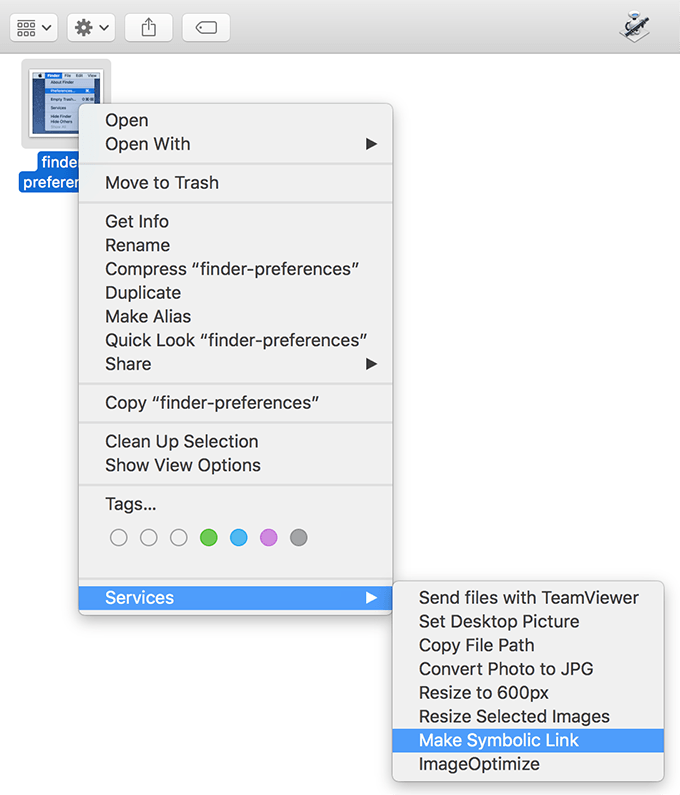

- #SYMBOLIC LINKER FOR MAC FOR MAC#
- #SYMBOLIC LINKER FOR MAC MAC OS#
- #SYMBOLIC LINKER FOR MAC FULL#
- #SYMBOLIC LINKER FOR MAC PLUS#
- #SYMBOLIC LINKER FOR MAC WINDOWS#
If you’re unsure of your sync folder location you can use the Finder to find out where the Sync folder is located:Ģ. If you are unsure of your username, type the command whoami into the Terminal and press enter Tips: F inding your username and folder location In this example, because there is a space between the words ‘Test’ and ‘Folder’ a backslash is entered before the space to signify the space is part of the name that is being entered Ln -s /Users/username/Downloads/Test\ Folder /Users/username/Desktop/Sync/Test\ Folder If you get an error like “The operation can’t be completed because the original item can’t be found.” Make sure to check your spelling and remember Terminal is case sensitive.Īnother example, creating a link to a folder that has spaces in it’s name: When a symlink is created successfully you’ll see your folder in the sync folder.
#SYMBOLIC LINKER FOR MAC PLUS#
*The first path being the folder you want to sync and the second path being your Sync folder location plus the name of the folder you want to symlink *Replace username with your actual username Ln -s /Users/username/Documents /Users/username/Desktop/Sync/ Documents In Applications double click Utilitiesįor example, to sync your ‘Documents’ folder, copy and paste the command in Terminal: It’s more than just a simple backup tool. If I had to list down the most useful tools that I’ve used in my computer life, Dropbox would be one of the top name on the list.

#SYMBOLIC LINKER FOR MAC FOR MAC#
On Mac, you will use the Command Terminal.ģ. Symboliclinker Mac Terminal Symbolic Linker For Mac Symboliclinker Mac Terminal Symbolic Linker For Mac. Lastly, overlays are not visible on symlinked folders. You should also be sure to set the correct permissions for the folders. You’ll need to create your symlinks inside the Sync folder. You cannot make the Sync folder a symlink. Symbolic Links are synced to the cloud in intervals of 20 minutes as long as no other processes are taking place in Sync. This article provides directions as a reference, but due to the complexity of setting it up (not supported on all operating systems), we are unable to provide detailed instructions for any particular setup. Note: Symbolic links are not officially supported. But, unfortunately, aliases do not work from the command line, so this benefit is not as impressive as it could be (at least for me).How do I sync folders outside of the Sync folder on Mac? This may be interesting to transparently access files saved into an encrypted disk image: you store the files into the image, create aliases to them on your desktop and, when opened by any alias-aware application, the system will ask you for the image’s password, mount it and provide you the file. When accessing such an alias, the system will automatically mount the corresponding disk image if not already mounted and then redirect you to the file. For example: an alias can point to a file that is stored inside a disk image. The interesting thing about aliases is that they are more versatile than symbolic links. However, they have the a extended attribute set on them, which marks them as special files, and the necessary information is stored (I think) in their resource fork.

#SYMBOLIC LINKER FOR MAC WINDOWS#
To achieve somewhat similar to Windows folder redirection I used to delete the original 'documents' and 'desktop' folders and create symbolic links to their equivalent in my OneDrive folder. (This is how things work in UFS I suspect HFS+ is similar, but cannot confirm it.)Īliases, on the other hand, are created from the Finder (and possibly with SetFile(1), but I don’t know how) and are stored as regular, empty files if inspected from the command line. Question: Q: Symbolic link to documents and desktop folder gets reset after reboot on macOS 10.15 Catalina I use OneDrive for Business to sync my files.
#SYMBOLIC LINKER FOR MAC FULL#
A symbolic link is stored on disk as a non-empty file which contains the full or relative path to the file it points to then, the link’s inode is marked as special by activating its symbolic link flag. Once created, the Finder will represent them as aliases (with a little arrow in their icon’s lower-left corner) and treat them as such.

Symbolic links can only be created from the command line by using the ln(1) utility. However, for better or worse, differences still remain let’s see them. One could think they are effectively the same because, with the switch to a Unix base in version 10.0, symbolic links became a “normal thing” in the system.
#SYMBOLIC LINKER FOR MAC MAC OS#
Even though aliases and symbolic links may seem to be the same thing in Mac OS X, this is not completely true.


 0 kommentar(er)
0 kommentar(er)
